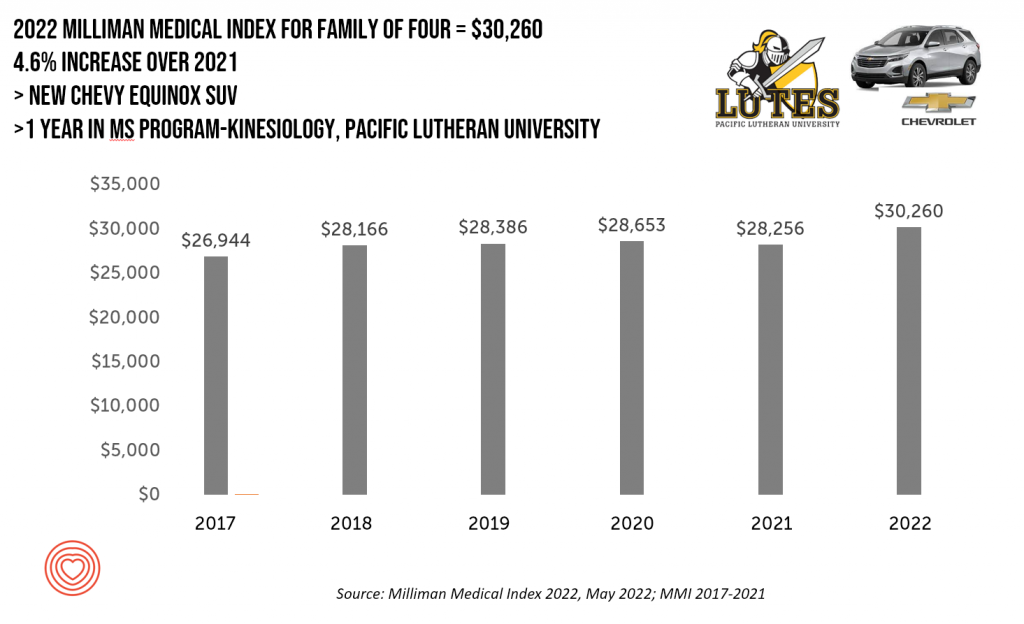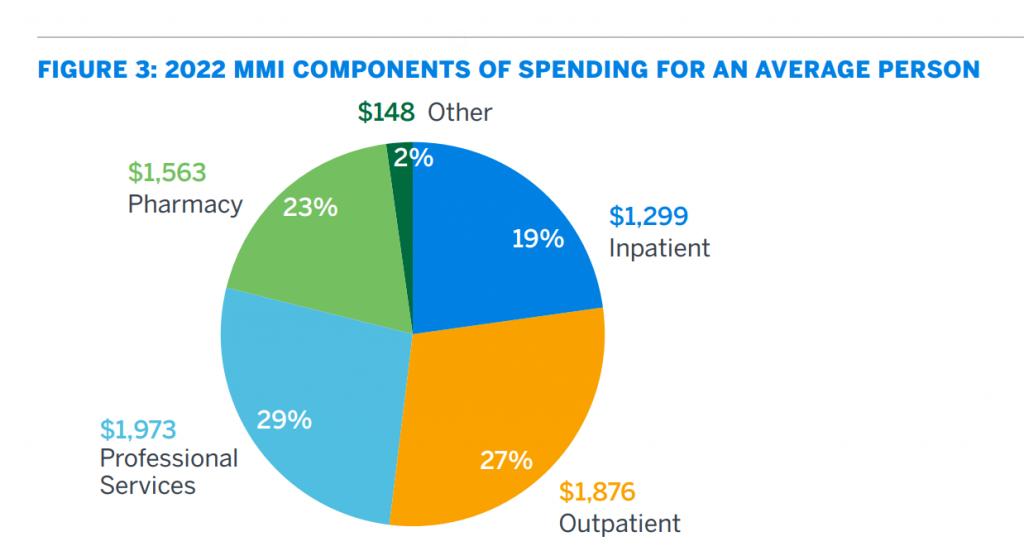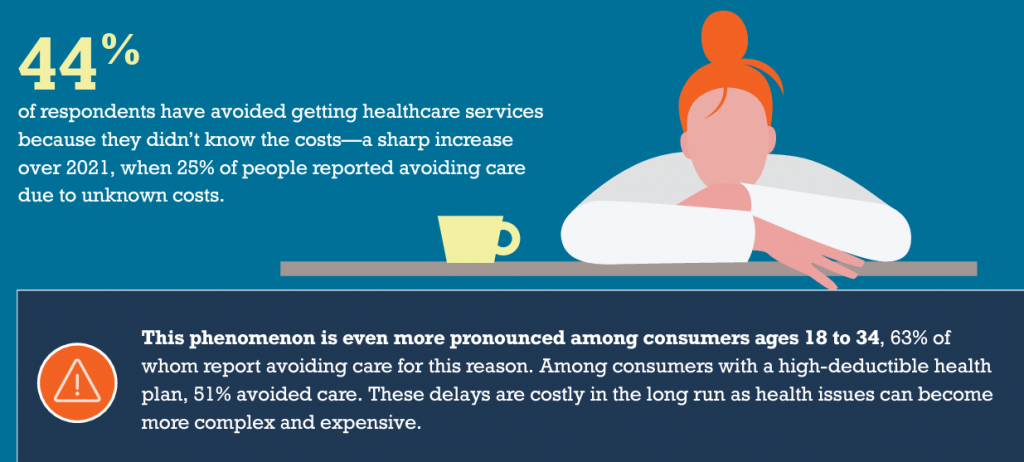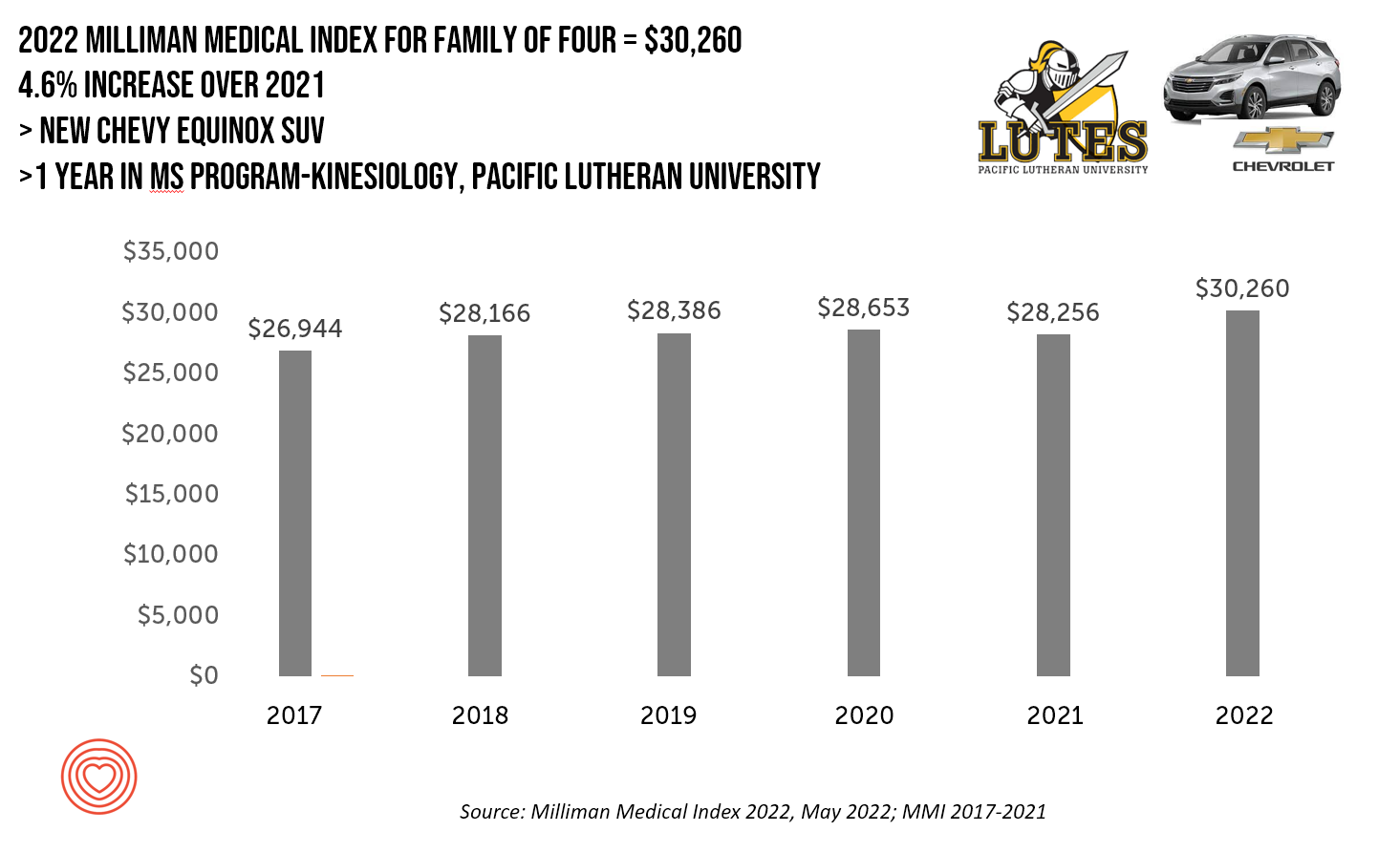A new Chevy Equinox SUV, a year in an MS program in kinesiology at Pacific Lutheran U., or health care for a family of four.
At $30,260, you could pick one of these three options.

Welcome to this year’s 2022 Milliman Medical Index, which annually calculates the health care costs for a median family of 4 in the U.S.
I perennially select two alternative purchases for you to consider aligning with the MMI medical index. I have often picked a new car at list price and a year’s tuition at a U.S. institution of higher learning.
Sometimes, I select a luxury good — a high-end watch, for example.
This year, I’m keeping it real in light of household inflation and families’ financial stress which is forcing families to make tougher choices, budgeting for higher cost food, energy and, to be sure, petrol for the auto gas tank.
While costs in the Index fell in 2021 (seen in the bar chart), in 2022 the MMI increased at a rate similar to pre-pandemic levels.
As Annie Mann, co-author of the study, observed, “It’s been a wild ride these last few years but in 2021 the MMI finally surpasses $30,000 for a hypothetical American family. It was only ten years ago that the MMI surpassed $20,000.”

Costs for an individual calculated to $6,859.
In that context, the MMI is built on medical cost components:
- Professional services, the largest chunk in the healthcare cost pie, running nearly $2,000 for an average person in the U.S.
- Outpatient care, comprising $1,876
- Pharmacy, costing $1,563 per person
- Inpatient care, at $1,299, and,
- Other costs, $148.
Note that over one-half of spending goes to hospital for inpatient and outpatient services. Pharmacy/medicines comprised about 23% of total spending for an individual. (Note that this does not reflect prescription drug rebates, which made up about 26% of drug claims in 2021, Milliman noted, more than doubling from 2013).
For my previous write-ups of the MMI, here are some links to check out…
MMI 2021 The Cost of Health Care for a Family of 4 in America Will Reach $28,256 in 2021
MMI 2020 What $6,553 Buys You in America – A Luxury Watch or a Year at Valdosta State
MMI 2019 Milliman Finds PPO for Family of 4 in 2019 Will Cost $28,386
MMI 2018 Health Care for Typical Working Family of Four in America Will Cost $28,166
MMI 2017 Health Care Costs for Family of Four Will Reach $27,000 in 2017
Health Populi’s Hot Points: Beyond 2022, we can expect the COVID-19 pandemic effects to continue to shape health care spending due to the medical distancing of many patients postponing care (both preventive and diagnostic as well as treatments for chronic conditions). In addition, technology costs have underpinned growth in medical spending, along with prices for labor (noted in the ongoing Kaufman Hospital Flash Reports series) and general macroeconomic trends — inflation, the cost of commodities, and labor supply, among key factors.
In light of inflation (especially on the consumer household side), two key medical spending components to watch will be the inpatient/hospital line item and the pharmacy/prescription drug spend. Both the AHA (Hospitals) and PhRMA (pharmaceutical) have strong advocacy (lobbying) organizations on Capitol Hill and State houses to promote their arguments for each sector. Health consumers have tended to demonize pharma more than they have hospitals, but the pandemic raised trust in (some) pharma companies as well as for local health systems supporting communities’ health in the public health crisis.

With household wallets being severely pressured in and through 2022 for basic needs spending, some patients-as-consumers and -payers may postpone their care — whether filling prescriptions or taking full courses of treatment on the medicines side, or delaying necessary care due to cost, as the latest HealthSparq consumer health study observed. Over 4 in 10 people avoided getting medical care due to lack of transparent costs — a big spike up from 25% (1 in 4) in 2021.
Such behavior raises the costs for every stakeholder.
Appreciating Milliman’s ongoing efforts to enlighten and expand healthcare cost transparency to empower consumers and families to bolster financial (and as a result, physical and mental) health.





 I am so grateful to Tom Lawry for asking me to pen the foreword for his book, Health Care Nation,
I am so grateful to Tom Lawry for asking me to pen the foreword for his book, Health Care Nation,  I love sharing perspectives on what's shaping the future of health care, and appreciate the opportunity to be collaborating once again with Duke Corporate Education and a global client on 6th May. We'll be addressing some key pillars to consider in scenario planning such as growing consumerism in health care, technology (from AI to telehealth), climate change, and trust -- the key enabler for health engagement or dis-engagement and mis-information. I'm grateful to be affiliated with the corporate education provider
I love sharing perspectives on what's shaping the future of health care, and appreciate the opportunity to be collaborating once again with Duke Corporate Education and a global client on 6th May. We'll be addressing some key pillars to consider in scenario planning such as growing consumerism in health care, technology (from AI to telehealth), climate change, and trust -- the key enabler for health engagement or dis-engagement and mis-information. I'm grateful to be affiliated with the corporate education provider  Thank you FeedSpot for
Thank you FeedSpot for